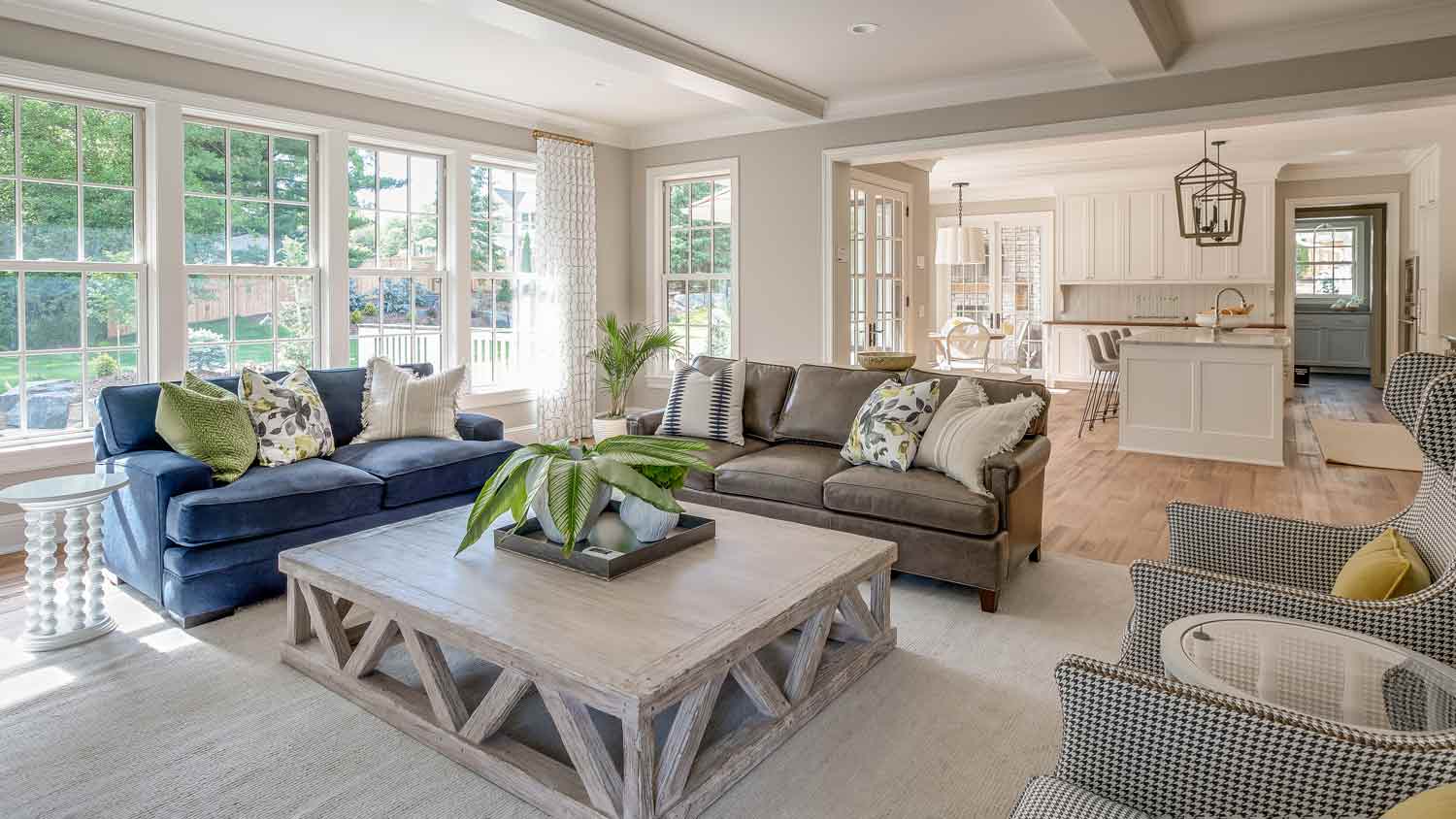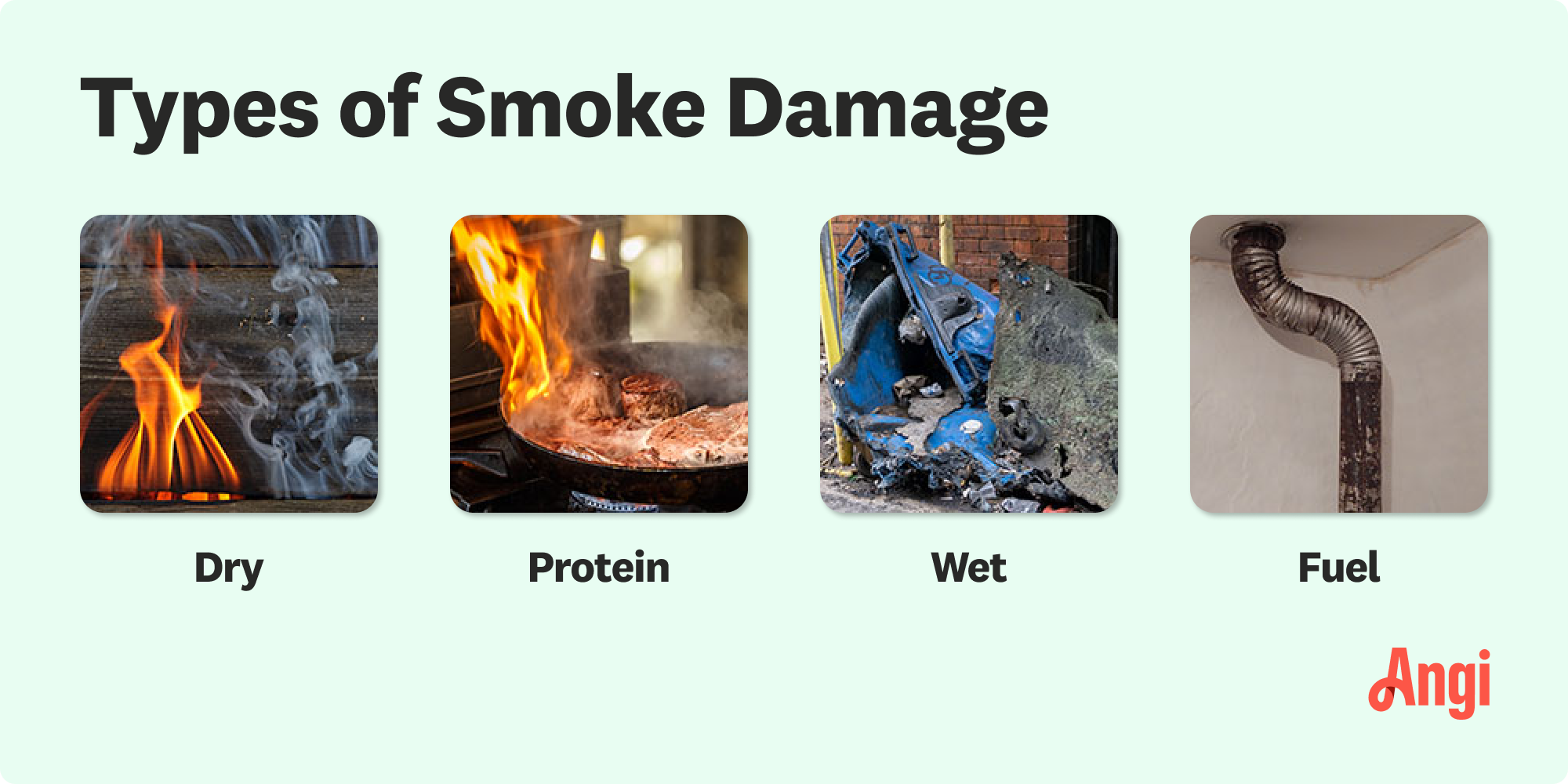
Need to get rid of lingering smoke odors in your home? Learn how much smoke remediation costs to budget accurately for this major undertaking.
We answer your burning questions about smoke damage


After a fire in your home, smoke can continue damaging your house and everything in it. Not all smoke damage is the same, though—different materials cause different types of smoke when they burn, and each type of smoke damage poses different risks and requires different cleanup methods. Our guide explores the four kinds of smoke damage and what causes them.


Dry smoke results from high-temperature, fast-burning fires that consume materials like paper and wood. Dry smoke leaves a fine, powdery residue that’s easier to clean off of surfaces than other types of soot. However, the fine particles that dry smoke leaves behind can travel farther and get into cracks, crevices, and porous materials more easily than other kinds of smoke. Soot from dry smoke can also be very abrasive and acidic, leaving etch marks on surfaces and causing staining and discoloration.
Wood
Paper
Cotton textile

Wet smoke occurs with lower-temperature, slow-burning fires of materials like rubber and plastic. As these materials burn at lower temperatures, they aren’t fully consumed like materials in higher temperature fires, instead filling the air with thick, black smoke and heavy, sticky residue. Wet smoke has a much harsher smell than dry smoke and is much more difficult to clean. With wet smoke damage, you’ll likely have more things you’ll need to throw away after smoke damage because the residue is so difficult to clean.
Plastic
Rubber

If you’ve ever opened a barbecue grill while making burgers or cleaned your stove’s range hood, you’re familiar with protein smoke. This smoke occurs when organic matter like meat burns, leaving a nearly invisible sticky, oily mist that spreads easily, infiltrates your ventilation system, and penetrates into porous materials. Kitchen fires result in protein smoke, and the residue and smell can linger for a long time.
Meat
Eggs
Other food

While less common in house fires, fuel smoke is the result of burning petroleum-based fuel sources. This smoke is extremely hazardous to your health due to the chemical compounds that are released as the fire burns. It leaves behind a sticky, sooty, harsh-smelling residue that’s very hard to clean and should only be handled by trained professionals.
Gasoline
Motor oil
Furnace fuel oil
It can be very dangerous to live in a house with smoke damage. The residue can cause respiratory problems and chronic health issues, as well as corroding, staining, and deteriorating items in your home. Regardless of the type of smoke damage you have, it’s important to remedy it as quickly as possible after a fire to ensure your home is safe.
The type of smoke damage restoration you need will depend on the specifics of your situation, ranging from ozone smoke removal to thermal fogging and manual soot removal. Because smoke can travel into your ventilation system and areas of your home far from the actual fire, the smoke damage restoration process may involve a larger part of your home than just where the fire occurred.
The first thing you should do to mitigate water damage is immediately stop the water source if you can. Remove all the standing water you can see with towels or pumps and dry the affected areas with fans and dehumidifiers. At this point, you'll likely need to call a professional water damage restoration company to fully restore your home.
Unless you had a minor fire and you’re certain the smoke damage is fully contained to a small area, you’ll want to hire a professional who specializes in smoke damage to restore your home to its pre-fire condition. A local smoke restoration pro will be able to effectively remove residue and odors and repair or replace smoke-damaged materials. Smoke remediation costs will depend on the extent of the damage, the type of smoke, and the affected materials.
From average costs to expert advice, get all the answers you need to get your job done.

Need to get rid of lingering smoke odors in your home? Learn how much smoke remediation costs to budget accurately for this major undertaking.

Fixing a slab leak requires finding the leak, digging a trench, breaking the slab, pipe lining, and more. Keep reading to learn how to fix a slab leak.

Fire damage restoration costs vary widely based on the extent of the damage. Learn how to assess your home and estimate your total after a fire.

Follow this simple guide to fix water-damaged wood furniture. You don’t always have to buy new ones.
.jpg?impolicy=leadImage)
Smoke smells can linger in your home for months or years. Learn 10 ways to get smoke smell out of your house for good.

Most homeowners don’t know how to deal with water damage. Use this guide to take the proper steps to minimize damage and keep your family and home safe.